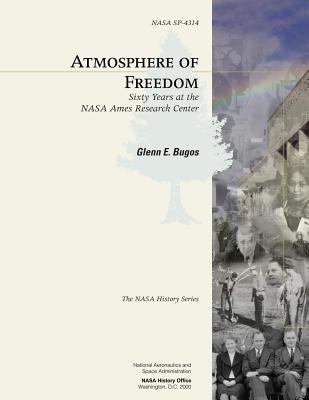
Atmosphere of Freedom: Sixty Years at the NASA Ames Research Center (NASA History)
Description
This detailed and fully-illustrated history of the NASA Ames Research Center describes its organizational structure, research culture, institutional leadership, major facilities and research programs from its founding in 1939 through 1999. The first chapter discusses Ames' origins as the NACA's second laboratory, and wind tunnel construction and the development of aerodynamic theory from subsonic to supersonic to hypersonic flight. The second chapter discusses Ames' transition into NASA, its contributions to the Apollo program, exobiology, simulators construction, and the Pioneer series of planetary explorers. The third chapter describes Ames' positioning in NASA's Shuttle era, roughly 1970 to 1990. Specifically, it covers the growth of research expertise in gravitational biology and planetary sciences, Earth observation and infrared astronomy, tilt rotor aircraft and helicopter design, air safety and flight research, thermal protection systems and planetary probes, computational fluid dynamics and intelligent systems. The fourth chapter describes Ames' renaissance since 1990 in the era of "faster, better, cheaper," and specifically its work in information technology and astrobiology and its relationships with larger communities. Throughout Ames history, four themes prevail: a commitment to hiring the best people; cutting-edge research tools; project management that gets things done faster, better and cheaper; and outstanding research efforts that serve the scientific professions and the nation. More than any other NASA Center, Ames remains shaped by its origins in the NACA (National Advisory Committee for Aeronautics). Not that its missions remain the same. Sure, Ames still houses the world's greatest collection of wind tunnels and simulation facilities, its aerodynamicists remain among the best in the world, and pilots and engineers still come for advice on how to build better aircraft. But that is increasingly part of Ames' past. Ames people have embraced two other missions for its future. First, intelligent systems and information science will help NASA use new tools in supercomputing, networking, telepresence and robotics. Second, astrobiology will explore the prospects for life on Earth and beyond. Both new missions leverage Ames' long-standing expertise in computation and in the life sciences, as well as its relations with the computing and biotechnology firms working in the Silicon Valley community that has sprung up around the Center. Rather than the NACA missions, it is the NACA culture that still permeates Ames. The Ames way of research management privileges the scientists and engineers working in the laboratories. They work in an atmosphere of freedom, laced with the expectation of integrity and responsibility. Ames researchers are free to define their research goals and define how they contribute to the national good. They are expected to keep their fingers on the pulse of their disciplines, to be ambitious yet frugal in organizing their efforts, and to always test their theories in the laboratory or in the field. Ames' leadership ranks, traditionally, are cultivated within this scientific community. Rather than manage and supervise these researchers, Ames leadership merely guides them, represents them to NASA headquarters and the world outside, then steps out of the way before they get run over.




























